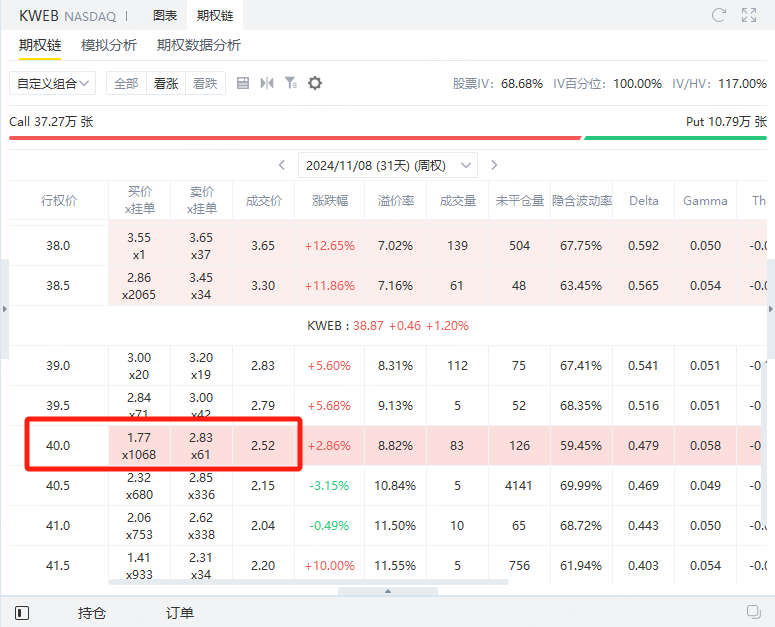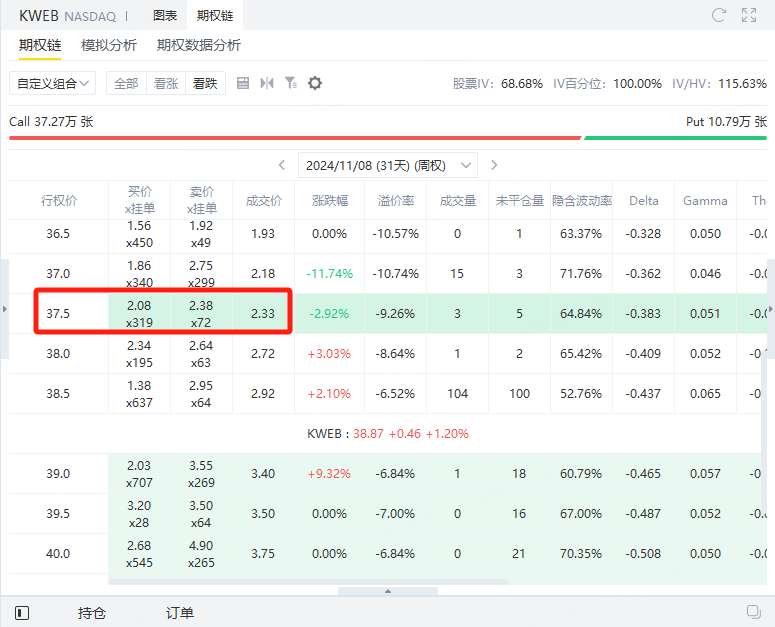Handling Chinese Stock Pullbacks: The Collar Strategy
Hong Kong stocks opened lower and kept falling. The $HSI(HSI)$ dropped over 2,000 points at one point, and the $HSTECH(HSTECH)$ tumbled by more than 14%.
Two Main Reasons:
First, the Fed's rate cut expectations have weakened significantly. Recently, the US dollar index and US Treasury yields have soared across the board. Yesterday, the 10-year Treasury yield hit above 4%. Today, non-US currencies rebounded across the board, especially the yen's rebound, leading to a sharp sell-off in Asia-Pacific markets.
Second, Chinese assets have surged recently. Whether it's Hong Kong stocks, FTSE A50 futures, or ETFs of Chinese assets listed overseas, they've all seen high returns. Yesterday, A50 open interest hit an all-time high, often signaling increased volatility.
Analysts also believe that the direction of the Fed's interest rates could be a key reason for the plunge.
St. Louis Fed President Musalem said he supported a 50 basis point rate cut at the September FOMC meeting. Over time, it would be appropriate to continue gradual rate cuts. Employment and inflation are both in a "good state," and the risks to these two goals are balanced.
The FOMC's policy path is "slightly above" the median. PCE inflation is expected to converge towards 2% in the coming quarters. The cost of too fast and too loose easing outweighs the cost of being too slow.
For investors with large positions, consider using the Collar Strategy to protect your holdings.
What is the Collar Strategy?
There's a strategy called Protective Put to protect downside risk by buying put options. To reduce the cost of stock holdings, you can sell Covered Call. To balance both, a new strategy was born - the Collar Strategy.
The Collar Strategy involves holding stocks while buying an out-of-the-money put option as insurance and selling an out-of-the-money call option to cover the insurance cost. It's like putting a collar around the stock, locking in its returns. Hence the name. In fact, the Collar Strategy is a combination of Protective Put and Covered Call, limiting downside risk at the cost of some upside profit potential.
When traders have long positions in related markets and want to protect them from downside shocks, they can use the Collar Strategy. When the entire cost of the put option is covered by selling the call option, it's called a costless collar.
Case Study: Collar Strategy with KWEB
Imagine an investor holding 100 shares of $KraneShares CSI China Internet ETF(KWEB)$ , currently priced at $38.87. Uncertain about the near-term price movements, the investor wants to insure their holdings. The Collar Strategy comes in handy here.
1.Set Collar Strategy
Step 1: Sell a call option with a strike price of $40 and an expiration date of November 8th for $2.52 per share, earning $252.

2.Profit and Loss
Most of the income from the call option sale offsets the cost of the put option purchase, resulting in a net cost of $0 and evena small profit of $19. This way, the investor establishes a protective strategy at a low cost.
The final protective effect of this strategy is that if KWEB falls below the put option strike price of $37.5, no matter how low it goes, the losses will be capped.
The maximum loss = put option strike price - underlying purchase price + call option premium received - put option premium paid, which equals $156. No matter how much KWEB drops before the option contract expires, even if it falls to $1, the investor's maximum loss will only be $156.
Beyond capping maximum losses, the Collar Strategy preserves the portfolio's profit-earning potential. When the underlying price rises to the call option strike price of $40, the portfolio achieves maximum gains.
From this case, it's clear that the Collar Strategy gives investors the ability to protect their "wins" and guard against risks in KWEB. After short-term volatility ends, investors can lift the Collar Strategy and continue with bullish or bearish strategies as they see fit.
Disclaimer: Investing carries risk. This is not financial advice. The above content should not be regarded as an offer, recommendation, or solicitation on acquiring or disposing of any financial products, any associated discussions, comments, or posts by author or other users should not be considered as such either. It is solely for general information purpose only, which does not consider your own investment objectives, financial situations or needs. TTM assumes no responsibility or warranty for the accuracy and completeness of the information, investors should do their own research and may seek professional advice before investing.
- BAITHISRINIVASCBCUOAOBAITHISRINIVASGOVUS·10-08$U11.SI(U11.SI)$/seuan!.LikeReport

